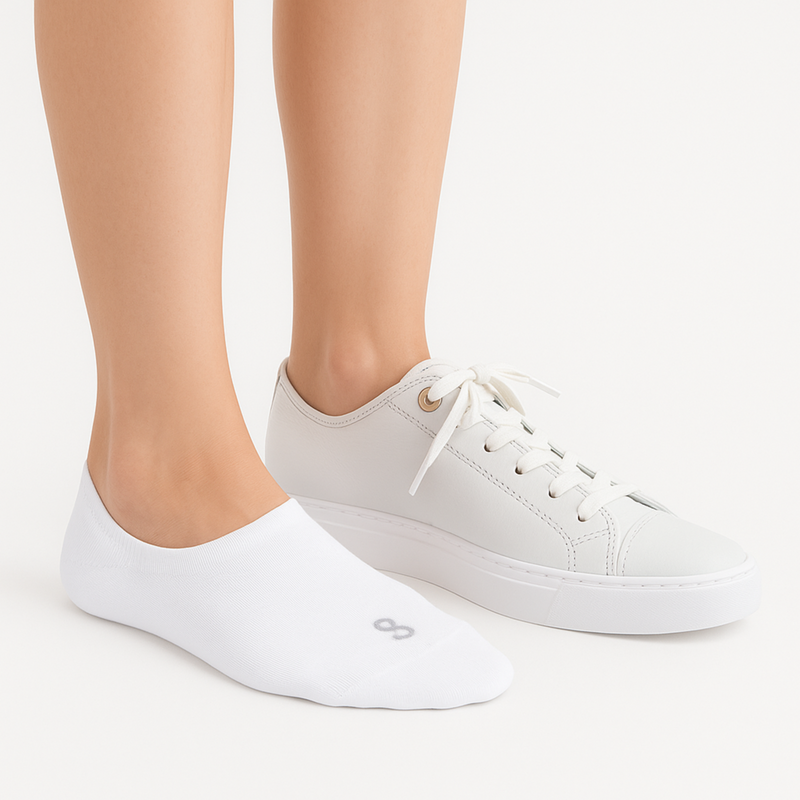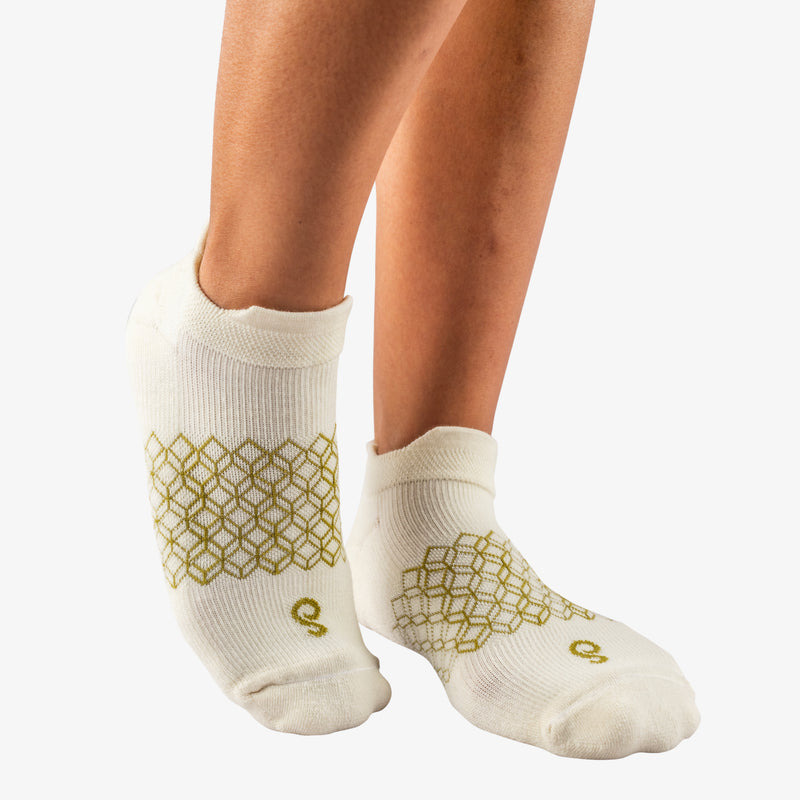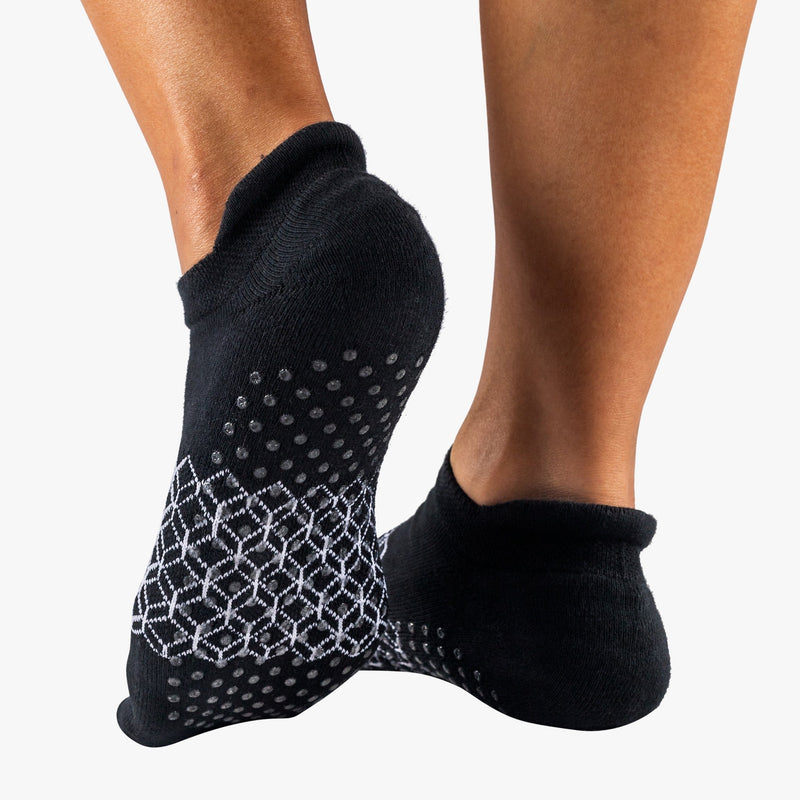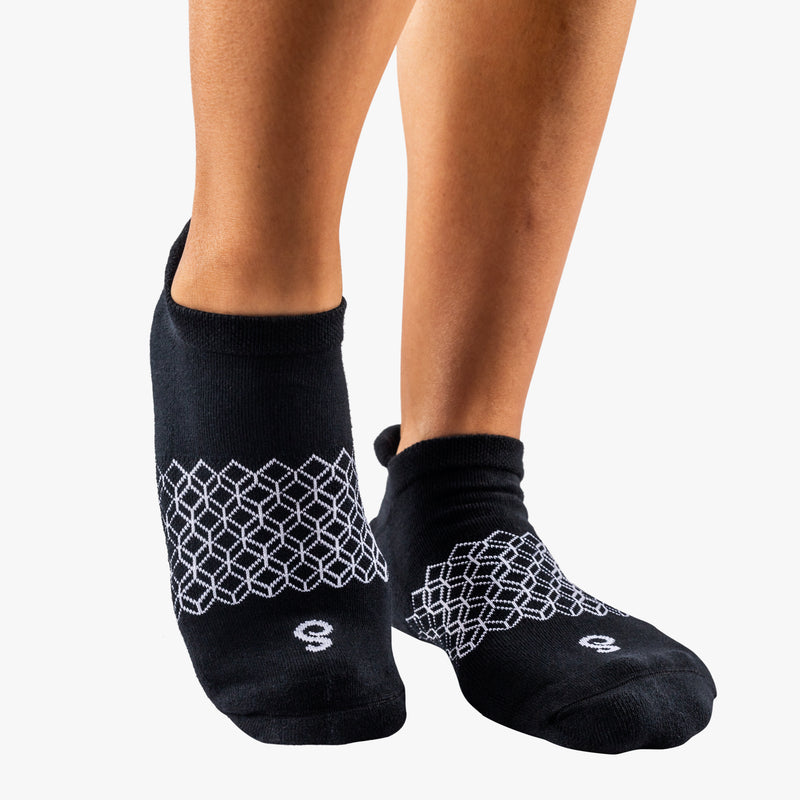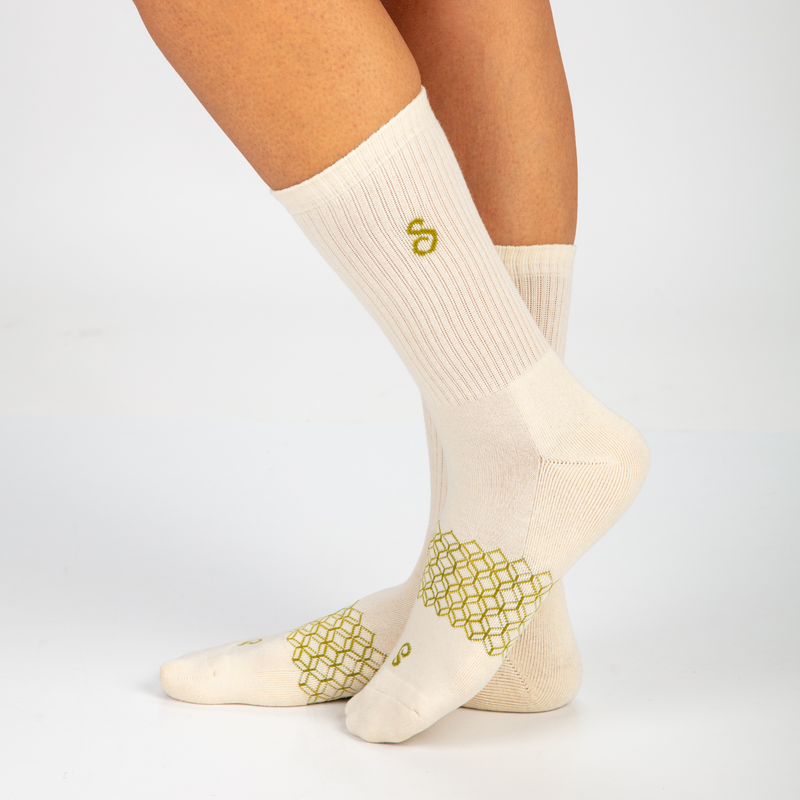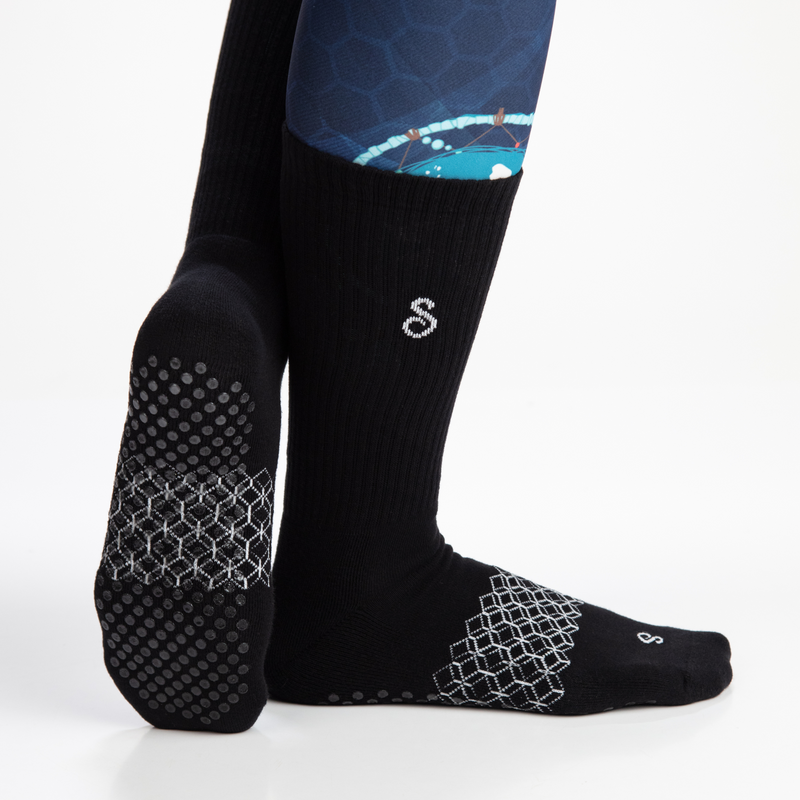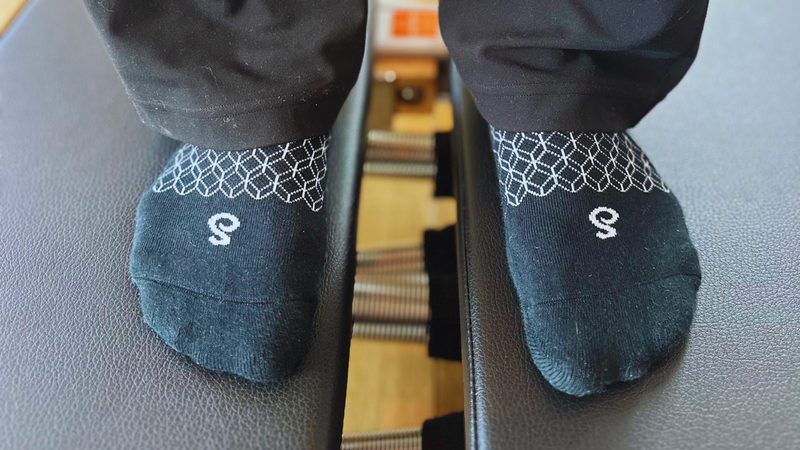
Pilates grip socks are an essential accessory for anyone looking to enhance their practice. They provide traction, support, and comfort, making them particularly useful on slippery surfaces. With a variety of styles and materials available, these socks cater to different preferences while ensuring stability during movements.
Many practitioners find that wearing grip socks can improve their performance by allowing for better control and balance. This is crucial in Pilates where proper alignment and precision are vital. Additionally, they keep feet warm and contribute to hygiene when practising in shared spaces.
The choice of grip socks can vary based on individual needs, such as foot shape and activity level. Some may prefer full-toe designs for a more barefoot feel, while others might opt for extra cushioning. Whatever the preference, incorporating these socks can elevate the Pilates experience significantly.
What Are Pilates Grip Socks?
Pilates grip socks are specialised footwear designed to enhance performance and safety during Pilates sessions. They combine functionality with comfort, making them a popular choice for practitioners. The following details their design features and specific benefits.
Design and Features
Pilates grip socks incorporate a unique design aimed at providing optimum grip and support. Typically, they are made from breathable fabric, such as cotton or a synthetic blend, which allows for flexibility and comfort.
The soles of these socks feature textured grips made from materials like silicone or rubber. This design prevents slipping on smooth surfaces, enhancing stability during dynamic movements.
Many varieties also include a fitted design that hugs the foot, eliminating excess material that could cause bunching or distraction. Some models may have additional features, such as arch support and moisture-wicking properties, which improve comfort and hygiene.
Benefits of Wearing Grip Socks in Pilates
Wearing grip socks during Pilates offers several distinct advantages. Firstly, they significantly enhance traction on mats and equipment, allowing for a secure grip during various poses and exercises. This traction is essential for maintaining balance, especially in challenging positions.
Secondly, grip socks can improve body awareness. With direct contact to the mat, practitioners can better connect with their movements and adjust alignment as needed.
Additionally, grip socks help to keep feet warm, especially in cooler studio environments. This warmth can prevent discomfort and promote muscle relaxation, which is beneficial during practice.
In summary, Pilates grip socks are an essential accessory designed to enhance safety and performance during workouts.
How to Choose the Right Pilates Grip Socks
Selecting suitable Pilates grip socks enhances the workout experience by providing comfort, stability, and safety. Key aspects include the material, size, fit, grip patterns, and density, all contributing to performance on the mat.
Material Considerations
When evaluating materials, look for socks made from a blend of cotton, polyester, and elastane. Cotton offers breathability, essential for keeping feet cool. Polyester adds durability and moisture-wicking properties, while elastane provides stretch for a snug fit.
Avoid socks made solely from synthetic materials, as they might lack breathability. Additionally, consider options with antimicrobial features, as these socks can reduce odours. Some brands also use eco-friendly materials for those prioritising sustainability. Choosing high-quality materials often ensures longevity and enhances overall comfort.
Size and Fit
Proper fit is crucial for maximising the benefits of grip socks. Sizes typically range from small to extra-large, so it’s vital to consult the sizing chart specific to each brand.
A snug fit prevents slipping and enhances stability during movements. Opting for a size that’s too small may result in discomfort, while too large a size can lead to reduced grip. Many socks are designed with compression features that help mould to the foot’s shape, promoting support without restricting movement. Try on various styles to determine which fits best and offers the most comfort.
Grip Pattern and Density
The grip pattern significantly influences traction on various surfaces. Look for socks with rubberised dots or textured patterns along the soles. These features provide friction and prevent slipping, promoting stability during challenging poses.
Density is also important; socks with denser grips usually offer more traction. A thicker grip can enhance performance when practising on slicker surfaces, while lighter patterns may suffice for smoother mats. Assess the specific requirements based on personal practice styles and environments to select the most appropriate grip socks.
The Importance of Foot Hygiene in Pilates
Foot hygiene plays a critical role in maintaining overall health during Pilates practice. Proper care helps prevent infections and ensures that grip socks remain effective and durable. Understanding the significance of foot hygiene can enhance a practitioner’s experience and wellbeing.
Preventing Foot Infections
Keeping feet clean is essential to preventing infections, particularly in a shared studio environment. Bacteria and fungi thrive in warm, damp conditions, making sweaty feet a potential breeding ground.
To avoid infections, individuals should adopt these practices:
- Wash Feet Regularly: Clean feet daily with soap and water, especially before and after class. Pay attention to areas between the toes.
- Dry Feet Thoroughly: Dry feet completely, particularly between the toes, to minimise moisture.
- Use Antifungal Powder: A light dusting of antifungal powder can help keep feet dry and reduce the risk of fungal infections.
Regular checks for any cuts, blisters, or unusual changes can also help in identifying and addressing issues early.
Proper Care and Maintenance of Grip Socks
Grip socks are designed to enhance stability during Pilates, but they require proper care to maintain their effectiveness and prolong their lifespan. Clean grip socks help prevent the buildup of bacteria.
Maintenance tips include:
- Washing: Grip socks should be washed after each use, preferably in cold water to protect the grip elements. Hand washing is often recommended.
- Avoid Fabric Softeners: Softeners can deteriorate the grip material, reducing their functionality.
- Air Dry: It is best to air dry grip socks, avoiding direct sunlight and high heat, which can warp or degrade the elastic fibres.
Adhering to these care practices not only keeps the socks in better condition but also supports proper foot hygiene during Pilates sessions.
Differences Between Pilates Socks and Regular Socks
Pilates socks are designed specifically for activities like Pilates and yoga. In contrast, regular socks serve general purposes and lack features tailored for exercise.
Key differences include:
-
Grip: Pilates socks typically feature rubber or silicone grips on the soles. This provides traction, helping to prevent slipping during workouts. Regular socks usually have a smooth sole.
-
Fit and Design: Pilates socks are often made from a thicker, stretchable fabric to offer better support. They may also come with a more fitted design to stay in place. Regular socks can vary widely in fit.
-
Material: Pilates socks commonly use moisture-wicking materials. This helps keep feet dry and comfortable during exercise. Regular socks may not prioritise moisture management.
-
Toe Options: Some Pilates socks have an open-toe design, allowing for better grip and awareness of foot placement. Regular socks are generally closed-toe.
-
Use: Pilates socks are intended for fitness environments, enhancing performance and safety. Regular socks tend to be worn in everyday situations without specific activity considerations.
These distinctions highlight the purpose-specific nature of Pilates socks compared to the versatility of regular socks. Selecting the appropriate type of sock can significantly impact comfort and performance during exercise.
Best Practices for Using Pilates Grip Socks
Using Pilates grip socks increases safety and performance during sessions. Proper care and usage in various contexts can enhance their benefits and longevity.
During a Pilates Session
Wearing grip socks during a session provides better traction on mats and equipment. This foot stability is essential for maintaining balance, especially in exercises requiring precision.
Important tips:
- Ensure socks fit snugly without being restrictive.
- Check grip quality; worn-out grips diminish effectiveness.
It is advisable to choose socks with a breathable material to keep feet dry and comfortable. This is crucial for maintaining focus during workouts.
Ultimately, cleanliness matters. Keep socks free from dirt and excess moisture to avoid slips and skin irritation.
Outside the Pilates Studio
Grip socks can be versatile, suitable for other fitness classes and home workouts. When selecting socks for these activities, consider the following:
Considerations include:
- Opt for styles that complement various types of exercise.
- Ensure they are machine washable for easy maintenance.
Wearing grip socks at home, while engaging in yoga or stretching routines, can enhance stability and grip. They offer an alternative to bare feet, especially on slippery surfaces.
When running errands or lounging, flexibility remains essential. Choose stylish grip socks that provide comfort without compromising support, ensuring functionality in different settings.
Top Brands and Manufacturers of Pilates Socks
Several brands stand out in the production of Pilates grip socks. These manufacturers focus on quality, comfort, and function. Here are some notable names:
-
ToeSox
Renowned for their five-toe design, ToeSox offers excellent grip and flexibility. -
Liforme
Known for premium yoga and Pilates accessories, Liforme produces high-quality socks that enhance performance. -
Beyond Yoga
This brand combines style and function, with their grip socks designed for both Pilates and yoga enthusiasts. -
Gaiam
Gaiam is recognised for affordable and versatile grip socks, suitable for various fitness activities. -
Fabletics
Fabletics offers stylish options alongside functionality, catering to fashion-conscious consumers.
These brands provide a variety of styles and materials to suit different preferences.
Many of them focus on eco-friendly production methods, appealing to environmentally conscious consumers.
When selecting Pilates grip socks, it is essential to consider features such as padding, fabric breathability, and the type of grip.
Pilates Socks for Special Needs
Special considerations arise when selecting Pilates socks for individuals with specific needs. This includes those with sensitive skin and those recovering from injuries.
Considerations for Sensitive Skin
For individuals with sensitive skin, choosing Pilates grip socks made from hypoallergenic materials is essential. Fabrics like organic cotton or bamboo blends are often recommended. They reduce the risk of irritation and allow for breathability.
When purchasing, look for seamless designs to avoid friction and pinch points. Socks with a soft, non-elastic cuff can prevent tightness around the ankle, reducing discomfort during movement.
Additionally, socks featuring moisture-wicking properties are beneficial for regulating temperature. This helps keep feet dry and comfortable, further minimising skin irritation.
Adaptive Socks for Injuries
For those recovering from injuries, adaptive Pilates socks can provide important support. Look for options with additional padding in key areas, such as the heel and arch, to promote comfort during exercise.
Some adaptive socks incorporate adjustable features, such as Velcro straps, allowing for a customised fit. This aids in managing foot swelling and ensures stability while practising Pilates movements.
Furthermore, socks with grip on the sole are crucial for preventing slips, particularly for those with mobility challenges. This feature enhances safety, allowing users to focus on their practice without fear of falling.
Choosing the right Pilates socks can significantly enhance the experience for those with special needs.
Frequently Asked Questions
Pilates grip socks offer unique advantages for practitioners, enhancing stability and safety during sessions. Understanding the differences between grip socks and regular socks can assist in making informed choices about suitable footwear for Pilates.
What are the benefits of wearing grip socks during Pilates sessions?
Grip socks provide added traction, helping to prevent slipping on mats or hard surfaces. They can enhance balance, allowing for greater focus on form and technique. Additionally, grip socks keep feet warm, which may improve comfort during workouts.
How do Pilates grip socks differ from regular socks?
Pilates grip socks feature specialised grips on the soles, designed to provide traction. Regular socks lack this feature, which can lead to slippage during exercise. The material of grip socks is often more breathable and supportive than that of regular socks.
Can Pilates be effectively practised in bare feet, or are grip socks recommended?
Practising Pilates in bare feet is common and can be beneficial for natural foot movement. However, grip socks are recommended for those seeking additional stability. They can enhance performance, especially in dynamic movements or on slippery surfaces.
What should one look for when choosing the best Pilates grip socks?
When selecting Pilates grip socks, consider the fit and comfort of the material. Look for moisture-wicking fabrics to keep feet dry. Ensure the grip pattern on the soles offers sufficient traction based on personal preference.
Are there specific brands that are recommended for Pilates grip socks?
Several brands are well-regarded for Pilates grip socks, including Liforme, ToeSox, hipSwan, and Gripjoy. These brands are known for quality materials and effective grip designs. Researching user reviews can also help in identifying suitable options.
How often should Pilates grip socks be replaced for optimal performance?
It is advisable to replace Pilates grip socks when the grip wears down or the fabric shows signs of damage. Regular inspection of the socks can prevent slips during practice. Typically, replacing them every six months to a year is a good guideline, depending on usage.






